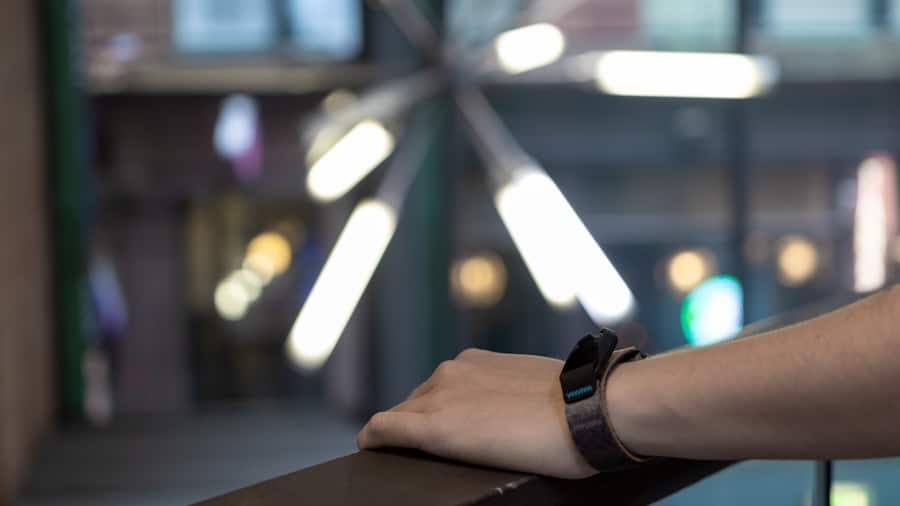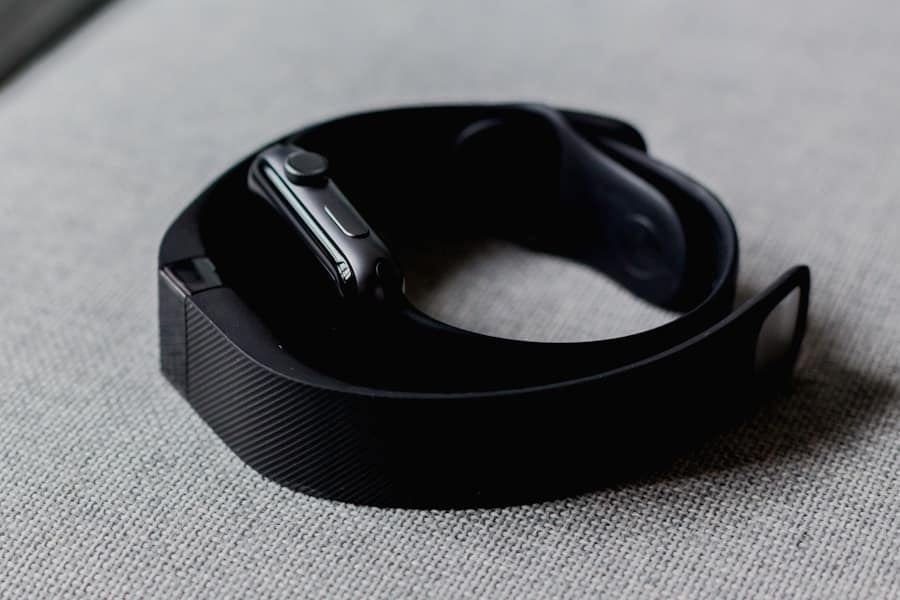In recent years, the integration of artificial intelligence (AI) into wearable technology has revolutionized various sectors, particularly in health and wellness. Among these innovations, AI-powered posture monitoring wearables have emerged as a significant advancement, offering users the ability to track and improve their posture in real-time. These devices utilize sophisticated algorithms and sensors to analyze body alignment and provide feedback, helping individuals maintain optimal posture throughout their daily activities.
The growing prevalence of sedentary lifestyles, exacerbated by increased screen time and remote work, has heightened the need for effective posture correction solutions. The technology behind these wearables typically involves a combination of accelerometers, gyroscopes, and machine learning algorithms that can detect deviations from ideal posture. By continuously monitoring the user’s movements and providing instant feedback, these devices aim to promote healthier habits and reduce the risk of musculoskeletal disorders.
As awareness of the importance of good posture increases, so does the demand for innovative solutions that can seamlessly integrate into daily life. This article delves into the myriad benefits, challenges, and future prospects of AI-powered posture monitoring wearables, shedding light on their potential impact on health and wellness.
Key Takeaways
- AI-powered posture monitoring wearables use artificial intelligence to track and analyze body posture and movement.
- These wearables can help improve posture, prevent musculoskeletal disorders, and enhance overall well-being.
- Challenges include accuracy of data, user compliance, and potential over-reliance on technology for posture correction.
- Artificial intelligence plays a crucial role in processing and interpreting the data collected by posture monitoring wearables.
- The future of AI-powered posture monitoring wearables in healthcare looks promising, with potential applications in rehabilitation and chronic disease management.
Benefits of AI-Powered Posture Monitoring Wearables
Immediate Feedback for Better Habits
The immediate feedback loop fosters greater awareness and encourages users to develop better habits over time. Moreover, these wearables often come equipped with advanced analytics capabilities that allow users to track their progress over time.
Data-Driven Insights for Improved Health
Many devices provide detailed reports on posture trends, highlighting improvements or areas that require further attention. This data-driven approach not only motivates users but also empowers them to take control of their health. For example, a user may notice that they tend to slouch more during specific activities, such as working at a desk or using a smartphone.
Taking Control of Health and Well-being
Armed with this knowledge, they can implement targeted strategies to address these issues, ultimately leading to improved overall well-being.
Challenges and Limitations of AI-Powered Posture Monitoring Wearables
Despite their numerous benefits, AI-powered posture monitoring wearables are not without challenges and limitations. One significant concern is the accuracy of the data collected by these devices. While many wearables utilize sophisticated sensors and algorithms, factors such as user movement patterns, clothing type, and even body shape can affect the precision of posture assessments.
For instance, a device may struggle to accurately detect posture changes if it is worn under loose clothing or if the user engages in rapid movements. This variability can lead to inconsistent feedback, potentially undermining the effectiveness of the wearable. Another challenge lies in user compliance and engagement.
While some individuals may be motivated to use these devices consistently, others may find it cumbersome or intrusive. The effectiveness of posture monitoring wearables hinges on regular usage; however, if users do not wear the device consistently or fail to act on the feedback provided, the potential benefits diminish significantly. Additionally, there is a risk that users may become overly reliant on technology for posture correction, neglecting the importance of developing intrinsic awareness and self-correction techniques.
The Role of Artificial Intelligence in Posture Monitoring
Artificial intelligence plays a pivotal role in enhancing the functionality and effectiveness of posture monitoring wearables. Machine learning algorithms are employed to analyze vast amounts of data collected from users over time, allowing these devices to learn individual movement patterns and identify deviations from optimal posture. This capability enables wearables to provide personalized feedback tailored to each user’s unique needs and habits.
For example, an AI algorithm might recognize that a particular user tends to lean forward while sitting at a desk and subsequently offer targeted suggestions for improvement. Furthermore, AI can facilitate predictive analytics in posture monitoring. By analyzing historical data, these wearables can anticipate potential posture-related issues before they arise.
For instance, if a user consistently exhibits poor posture during specific activities or times of day, the device can proactively remind them to adjust their position or take breaks before discomfort sets in. This proactive approach not only enhances user experience but also contributes to long-term health benefits by preventing musculoskeletal problems before they develop.
The Future of AI-Powered Posture Monitoring Wearables in Healthcare
The future of AI-powered posture monitoring wearables in healthcare appears promising as advancements in technology continue to evolve. These devices have the potential to play a crucial role in preventive healthcare by identifying early signs of musculoskeletal disorders and providing timely interventions. For instance, healthcare professionals could leverage data from wearables to monitor patients recovering from surgery or injury, ensuring they maintain proper alignment during rehabilitation exercises.
This integration could lead to more effective treatment plans tailored to individual needs. Moreover, as telehealth becomes increasingly prevalent, AI-powered posture monitoring wearables could serve as valuable tools for remote patient monitoring. Healthcare providers could access real-time data from patients’ devices, allowing for more informed decision-making and personalized care strategies.
This capability could be particularly beneficial for individuals with chronic conditions that require ongoing management, such as arthritis or scoliosis. By combining wearable technology with telehealth services, healthcare systems can enhance patient engagement and improve health outcomes.
Potential Applications of AI-Powered Posture Monitoring Wearables in Fitness and Wellness
Optimizing Athletic Performance
Athletes and fitness enthusiasts can benefit from real-time feedback on their form during workouts, helping them optimize performance while minimizing the risk of injury. For example, a runner wearing a posture monitoring device could receive alerts about their running form—such as overstriding or improper alignment—enabling them to make immediate adjustments for improved efficiency.
Promoting General Wellness
These wearables can also support general wellness initiatives by promoting mindfulness and body awareness. Many individuals struggle with maintaining proper posture during everyday activities like sitting at a desk or using mobile devices. By integrating posture monitoring into wellness programs, organizations can encourage employees or participants to adopt healthier habits throughout their day-to-day routines.
Enhancing Overall Well-being
This holistic approach not only enhances physical well-being but also contributes to mental health by fostering a greater connection between body awareness and overall wellness.
Privacy and Ethical Considerations in AI-Powered Posture Monitoring Wearables
As with any technology that collects personal data, privacy and ethical considerations are paramount when discussing AI-powered posture monitoring wearables. These devices often gather sensitive information about users’ movements and behaviors, raising concerns about data security and potential misuse. Manufacturers must prioritize robust data protection measures to ensure that users’ information is safeguarded against breaches or unauthorized access.
Additionally, ethical considerations extend beyond data privacy; they also encompass issues related to consent and user autonomy. Users should be fully informed about how their data will be used and have control over what information they choose to share. Transparency in data collection practices is essential for building trust between manufacturers and consumers.
Furthermore, as AI algorithms become more sophisticated in analyzing user behavior, there is a responsibility to ensure that these technologies are designed with fairness and inclusivity in mind—avoiding biases that could lead to unequal treatment or recommendations based on demographic factors.
The Impact and Potential of AI-Powered Posture Monitoring Wearables
AI-powered posture monitoring wearables represent a significant leap forward in health technology, offering innovative solutions for improving posture and overall well-being. Their ability to provide real-time feedback and personalized insights empowers users to take charge of their health while addressing common issues associated with poor posture. However, as this technology continues to evolve, it is essential to navigate the challenges related to accuracy, user engagement, privacy, and ethical considerations thoughtfully.
As society increasingly embraces digital health solutions, AI-powered posture monitoring wearables will likely play an integral role in shaping healthier lifestyles and preventing musculoskeletal disorders in an ever-evolving landscape of technology-driven wellness solutions.
If you’re interested in the latest trends in technology, you may also want to check out Unlock a New World of Possibilities with Samsung Galaxy Z Fold4. This article explores the innovative features of the Samsung Galaxy Z Fold4 and how it is revolutionizing the smartphone industry. Just like AI-powered posture monitoring wearables, the Samsung Galaxy Z Fold4 is pushing the boundaries of what is possible with technology.
FAQs
What are AI-powered posture monitoring wearables?
AI-powered posture monitoring wearables are devices that use artificial intelligence to track and analyze a person’s posture throughout the day. These wearables can provide real-time feedback and insights to help users improve their posture and overall health.
How do AI-powered posture monitoring wearables work?
AI-powered posture monitoring wearables typically use sensors to detect the user’s body position and movement. The data collected is then processed using artificial intelligence algorithms to provide feedback on posture, movement patterns, and potential areas for improvement.
What are the potential benefits of AI-powered posture monitoring wearables?
Some potential benefits of AI-powered posture monitoring wearables include improved posture, reduced risk of musculoskeletal issues, increased awareness of movement habits, and overall better physical health. These wearables can also provide personalized recommendations for posture improvement based on individual data.
What are the challenges of AI-powered posture monitoring wearables?
Challenges of AI-powered posture monitoring wearables may include accuracy of posture detection, user privacy concerns, and the need for continuous improvement of AI algorithms to provide more precise and actionable feedback.
How might AI-powered posture monitoring wearables impact the future?
AI-powered posture monitoring wearables have the potential to significantly impact the future by promoting better posture habits, reducing the prevalence of posture-related health issues, and contributing to overall improvements in public health and wellness. These wearables may also pave the way for advancements in AI technology for personalized health monitoring.



